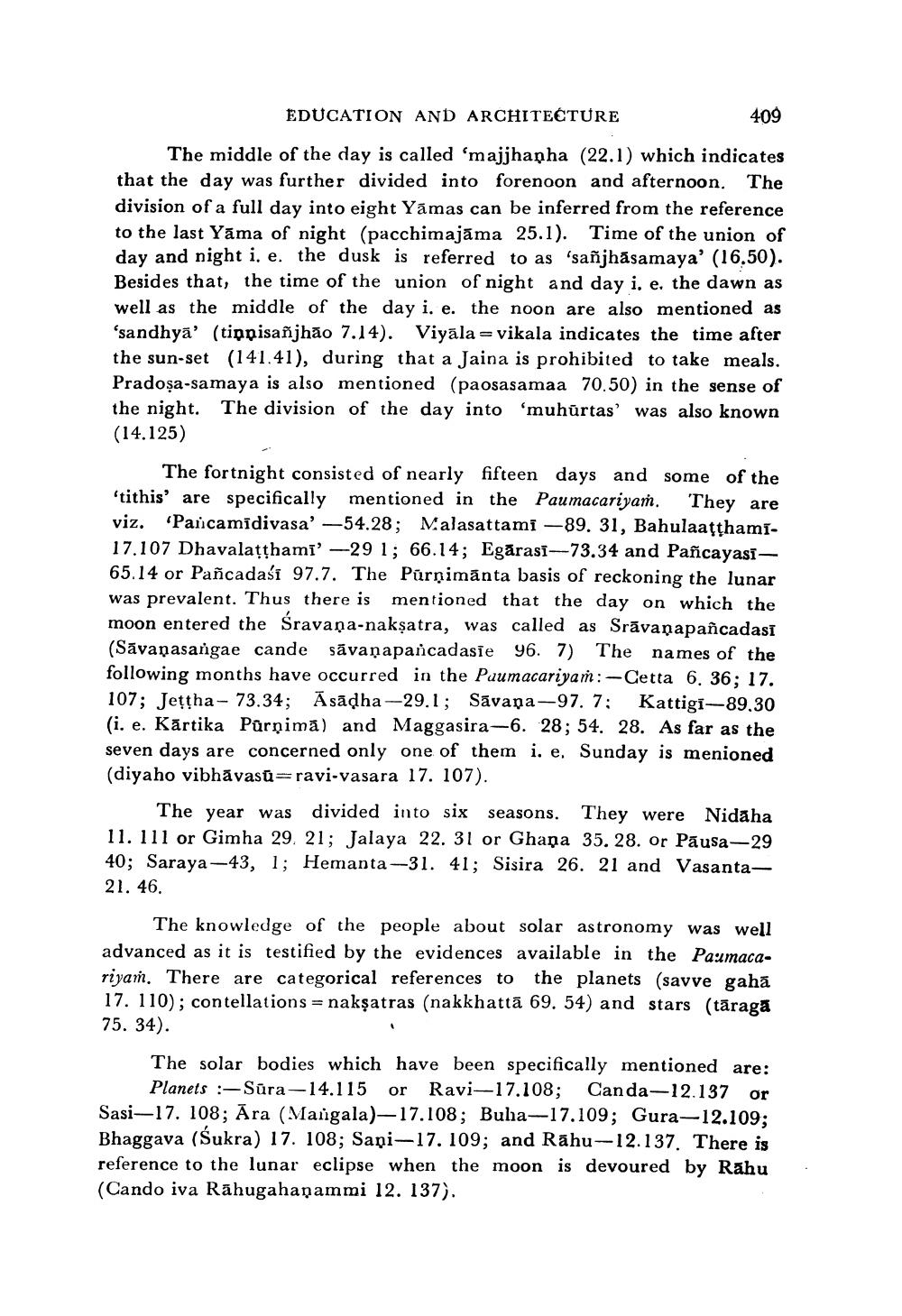________________
EDUCATION AND ARCHITECTURE
409
The middle of the day is called 'majjhanha (22.1) which indicates that the day was further divided into forenoon and afternoon. The division of a full day into eight Yamas can be inferred from the reference to the last Yama of night (pacchimajāma 25.1). Time of the union of day and night i. e. the dusk is referred to as 'sañjhāsamaya' (16.50). Besides that, the time of the union of night and day i. e. the dawn as well as the middle of the day i. e. the noon are also mentioned as 'sandhya' (tippisañjhão 7.14). Viyāla = vikala indicates the time after the sun-set (141.41), during that a Jaina is prohibited to take meals. Pradoșa-samaya is also mentioned (paosasamaa 70.50) in the sense of the night. The division of the day into 'muhurtas' was also known (14.125)
The fortnight consisted of nearly fifteen days and some of the 'tithis' are specifically mentioned in the Paumacariyam. They are viz. 'Pancamīdivasa' -54.28; Malasattami -89. 31, Bahulaatthami17.107 Dhavalaṭṭhami' -29 1; 66.14; Egarasi-73.34 and Pañcayasî65.14 or Pañcadasi 97.7. The Purnimanta basis of reckoning the lunar was prevalent. Thus there is mentioned that the day on which the moon entered the Śravana-nakṣatra, was called as Sravanapañcadasī (Savanasangae cande savaṇapancadasie 96. 7) The names of the following months have occurred in the Paumacariyam:-Cetta 6. 36; 17. 107; Jettha- 73.34; Asadha-29.1; Savana-97. 7: Kattigi-89.30 (i. e. Kartika Purnima) and Maggasira-6. 28; 54. 28. As far as the seven days are concerned only one of them i. e. Sunday is menioned (diyaho vibhāvasū=ravi-vasara 17. 107).
The year was divided into six seasons. They were Nidaha 11. 111 or Gimha 29. 21; Jalaya 22. 31 or Ghana 35. 28. or Pausa-29 40; Saraya-43, 1; Hemanta-31. 41; Sisira 26. 21 and Vasanta21. 46.
The knowledge of the people about solar astronomy was well advanced as it is testified by the evidences available in the Paumacariyam. There are categorical references to the planets (savve gaha 17. 110); contellations nakṣatras (nakkhattā 69. 54) and stars (tāragā 75. 34).
"
The solar bodies which have been specifically mentioned are: Planets :-Sura-14.115 or Ravi-17.108; Canda-12.137 or Sasi-17. 108; Ara (Mangala)-17.108; Buha-17.109; Gura-12.109; Bhaggava (Śukra) 17. 108; Sani-17. 109; and Rāhu-12.137. There is reference to the lunar eclipse when the moon is devoured by Rahu (Cando iva Rahugahanammi 12. 137).




